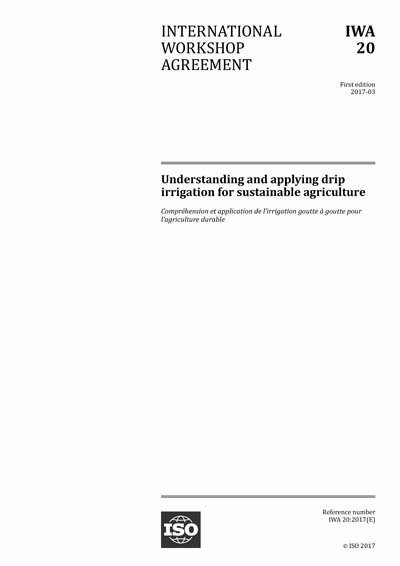Historical
IWA 20:2017
Understanding and applying drip irrigation for sustainable agriculture
IWA 20:2017 reviews drip irrigation in comparison to major irrigation methods available and practiced today by farmers worldwide. IWA 20:2017 reviews the benefits of drip irrigation, such as increased yield, reduced water consumption, reduced energy consumption, lower environmental impact, reduced contamination of groundwater and surface water, reduced greenhouse gas emissions and reduced labour.
IWA 20:2017 also reviews some of the limitations of drip irrigation.
IWA 20:2017 does not provide a technical specification for the implementation of drip irrigation.
The qualities of drip irrigation referred to in IWA 20:2017 apply to systems manufactured in accordance with ISO 9261 or equivalent standard.
IWA 20:2017 is intended to be used by agricultural policymakers, infrastructure providers, water supply regulatory bodies and authorities, and food chain and farmer cooperatives interested in developing agricultural policies to preserve natural resources and funds. IWA 20:2017 is also intended to be used by farmers and smallholders interested in applying an economic agricultural method.
Content Provider
International Organization for Standardization [iso]






